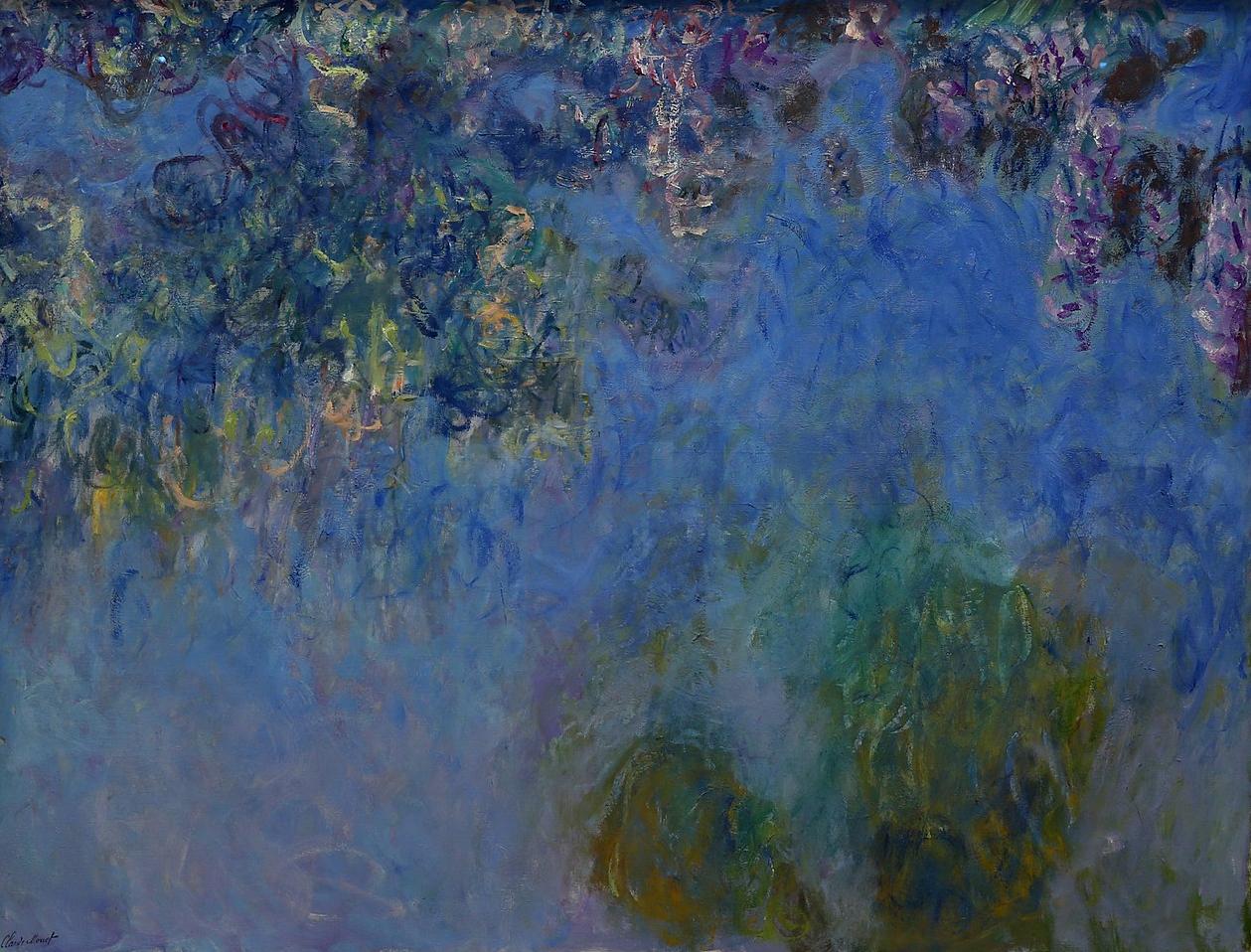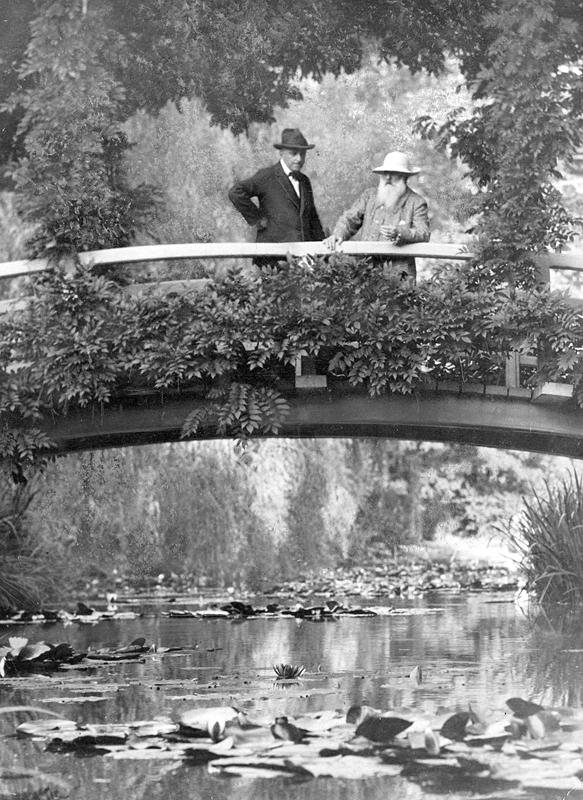What she discovered beneath the surface was a surprise that has offered insights into Monet’s productive last years. Beneath the swaths of swirling colors that comprise his Wisteria, lay the unmistakable shape of water lilies, Monet’s most famous subject matter.
For the last years of his life, Claude Monet (1840-1926) spent much of his time and artistic energy in his lush gardens in Giverny. Working with his gardener, Monet planned beautiful ponds planted with an exotic array of water lilies. Beginning in 1899 and until the end of his life, he spent his days in his gardens, greenhouse, and studio, painting the splendor around him. These depictions of waterlilies would become his most famous works.
His final series of water lily canvases, some as long as 20 feet, were meant to be displayed alongside paintings of wisteria, which were to hang above them, as the plants did in his garden. Upon his death, Monet gave the works to the French state, who displayed only the water lilies in the Orangerie. But the display was unpopular—his works had grown increasingly impressionistic, and some blamed Monet’s failing eyesight for their abstract nature.



























